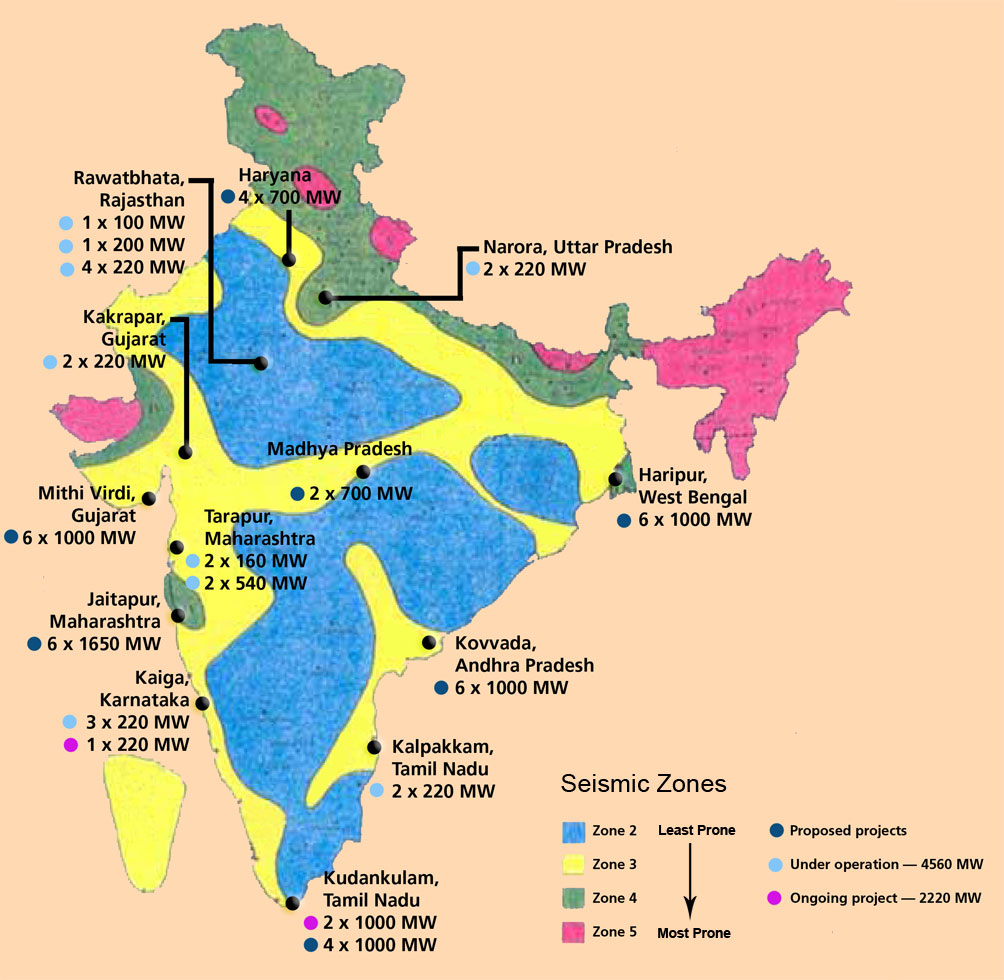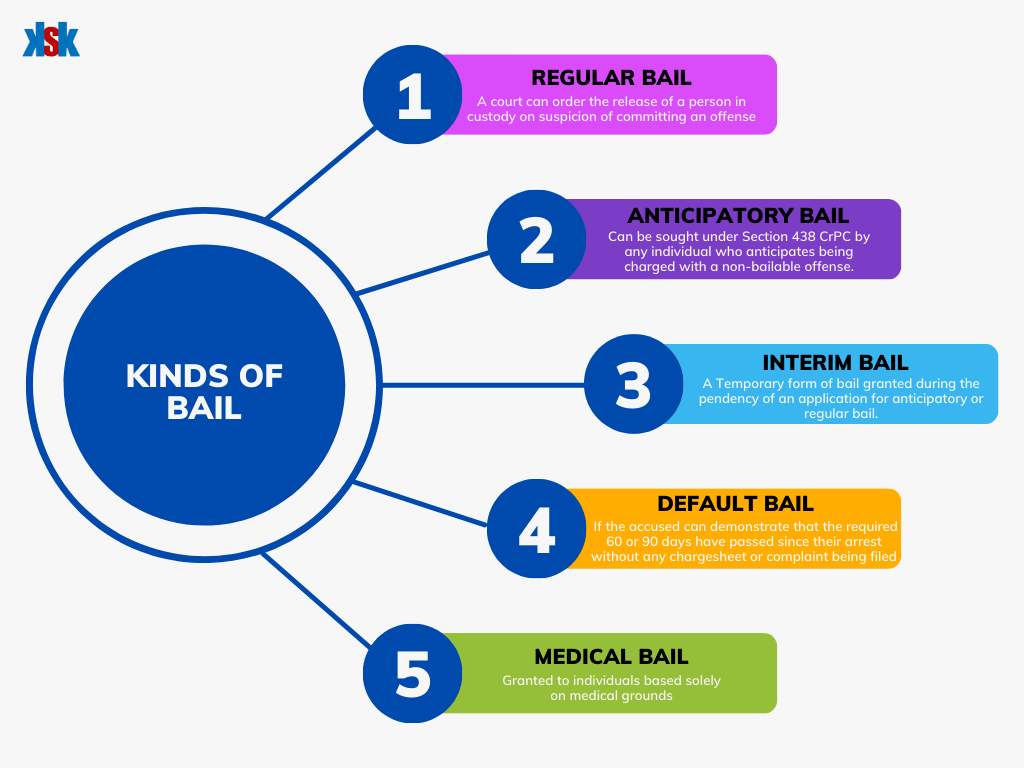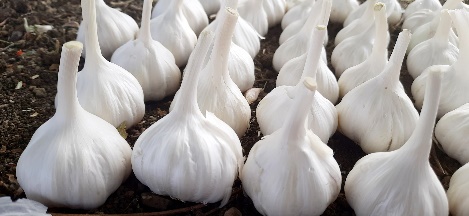|
|
||
|
5 March 2024 |
||
|
- Status of India’s Nuclear Programme
- India’s Bail System: Challenges and Prospects
- Status of Leopards in India, 2022
- Recently awarded GI Tags
- India’s first National Dolphin Research Centre

- Status of India’s Nuclear Programme
Overview
Prime Minister Modi recently celebrated a significant moment in India’s nuclear power journey by initiating core-loading at the Prototype Fast Breeder Reactor (PFBR) in Kalpakkam, Tamil Nadu.
This event marks a crucial step forward in India’s nuclear energy ambitions, ushering in the second stage of development.
Current State of Nuclear Power in India
As of 2024, nuclear power contributes around 3.11% to India’s total power generation, ranking as the fifth-largest electricity source after coal, gas, hydroelectricity, and wind power.
Historical Context: India’s Nuclear Power Program
- 1948: Establishment of the Atomic Energy Commission (AEC).
- 1950s: Formulation of the three-stage nuclear power program by Homi Bhabha.
- 1969: Commissioning of the first Pressurized Heavy Water Reactor (PHWR).
- 1974: India’s first nuclear test, Pokhran-I.
- Late 1970s – Early 1980s: Development of fast breeder reactors (FBRs) for Stage 2.
- 1990s – 2000s: Focus on nuclear arsenal post nuclear tests.

The Prototype Fast Breeder Reactor (PFBR)
- Energy Production: The PFBR operates as a fast breeder reactor, generating more fuel than it consumes for sustainable energy production.
- Operationalization Milestone: The initiation of core-loading marks the beginning of stage II in India’s nuclear power program.
- Technical Specifications: Designed to utilize plutonium-239 (Pu-239) and uranium-238 (U-238), the PFBR represents a significant advancement in India’s nuclear technology.

Technical Insights into PFBR Operations
- Core Functionality: Unlike PHWRs, the PFBR utilizes Pu-239 and U-238 for energy production.
- Cooling Mechanism: Liquid sodium serves as the primary coolant for heat transfer and electricity generation.

Challenges and Delays
- Historical Aspect: Prolonged delays and cost overruns due to technical complexities and logistical hurdles.
- Sanctions Impact: Disruption caused by sanctions following the 1974 nuclear test.
- Human Resource Constraints: Retirement of experienced personnel and delays in decision-making.
- Financial Implications: Escalating costs reaching ₹6,800 crore by 2019.
- Procurement Challenges: Inefficiencies in procurement processes leading to delays.
Future Prospects and Technological Innovations
- Role of Small Modular Reactors (SMRs): SMRs offer enhanced safety features and operational flexibility.
- Stage II Expansion: PFBR’s capacity sets the stage for future FBR projects, aligning with India’s energy diversification goals.
- Regulatory Imperatives: Ensuring safety and regulatory oversight remains crucial for public confidence and operational integrity.

Conclusion
The PFBR represents India’s technological prowess and strategic vision in nuclear power development. Despite challenges, India remains committed to leveraging nuclear energy for sustainable development and energy security through innovation and regulatory reform.
- India’s Bail System: Challenges and Prospects

Overview
India’s bail system is facing significant challenges, resulting in a large number of undertrials remaining in prison despite being granted bail. The complexities of complying with bail conditions, especially for marginalized individuals, exacerbate the situation.
Bail Provisions in India
Description
- Bail refers to the conditional release of a defendant with the promise to appear in court when required, along with a security deposit.
- Various types of bail are available in India under the Criminal Procedure Code (CrPC), including regular bail, interim bail, and anticipatory bail, each serving different purposes.
Case in Bailable Offences
- Bail may be granted for bailable offenses under specific conditions outlined in Section 436 of the Indian Penal Code (IPC), such as lack of evidence or the need for further inquiry.
Bail for Non-Bailable Offences
While bail is not a right for non-bailable offenses, it may be granted under certain circumstances, including the accused being a woman or child, lack of evidence, or grave illness.

Understanding the Crisis in Bail System
Overrepresentation of Undertrials
Over 75% of India’s prison population comprises undertrials, reflecting systemic inefficiencies in the bail system.
Judicial Reluctance
There is a growing reluctance among trial judges to grant bail, leading to a situation where incarceration becomes the norm.
Bail Backlog
The backlog of bail applications further exacerbates the problem, prolonging the detention of undertrials awaiting trial.
Judicial Acknowledgment and Guidelines
- Supreme Court’s Observations
The Supreme Court has acknowledged the ineffectiveness of India’s bail system and emphasized the principle of ‘bail not jail’ in various rulings.
- Need for Legislative Action
The Court has urged legislative action and laid down comprehensive guidelines to streamline bail procedures.
- Delayed Disposal of Applications
Despite court directives, delays in the disposal of bail applications contribute to prolonged detention of undertrials.
Empirical Assessment and Policy Reforms
- Lack of Empirical Evidence
The absence of empirical data hampers efforts to understand the bail system’s challenges comprehensively.
- Socio-economic Barriers
Bail laws disproportionately burden marginalized individuals, necessitating reforms based on a realistic assessment of the problem.
- No Data-driven Reform
Policymakers should prioritize empirical research to inform evidence-based policy reforms aimed at addressing systemic inequalities.
Safeguards and Adjudication Practices
- Arrest Safeguards: Existing safeguards against arbitrary arrest often exclude vulnerable populations, contributing to the high proportion of undertrials.
- Discretionary Adjudication: Courts exercise discretion in granting bail, but guidelines lack clarity on how socioeconomic factors influence bail decisions.
- Recording Reasons for Bail Denial: Courts should be mandated to record detailed reasons for denying bail, promoting transparency and accountability in the adjudication process.
Bail Compliance Challenges
Financial Hurdles
- Many undertrials struggle to comply with bail conditions due to financial constraints and lack of local sureties.
Structural Disadvantages
- Factors like lack of residence proof and family support further hinder undertrials’ ability to comply with bail conditions.
Support Mechanisms
- Establishing support mechanisms to assist undertrials in navigating the bail process and fulfilling conditions can alleviate compliance challenges.
Why Bail Needs Reform?
- Indiscriminate Arrests: Indiscriminate arrests contribute to the high number of undertrials, many of whom may not even need to be arrested for minor offenses.
- Disadvantages for Some Sections: The current system disproportionately affects the poor, illiterate, and women, perpetuating a cycle of disadvantage.
- Colonial Legacy:The colonial mindset of “jail, not bail” still influences magistrates’ decisions, leading to indiscriminate arrests.
Way Forward
No Flawed Assumptions: Reforming the bail system requires challenging flawed assumptions about socio-economic status and ensuring equal access to justice.
Call for Bail Reform: Meaningful bail reform necessitates a reevaluation of these assumptions and a data-driven approach to address systemic issues.
Holistic Approach: Reform efforts should adopt a holistic approach, addressing both procedural inadequacies and socio-economic barriers to ensure equitable access to bail.
Conclusion
India’s bail system is in urgent need of reform to address systemic inefficiencies and ensure justice for all. Empirical research, legislative action, and judicial scrutiny are essential components of a comprehensive reform agenda
- Status of Leopards in India, 2022
Context:
The ‘Status of Leopards in India, 2022’ report released by the Union Environment Ministry indicates a noticeable increase in the country’s leopard population, reaching an estimated 13,874 compared to 12,852 in 2018.

Overview of Leopard Population in India:
- Leopards, as apex predators in forested habitats across India, Nepal, Bhutan, and parts of Pakistan, play a crucial role in maintaining ecosystem balance.
- Central India and the Eastern Ghats have the highest leopard population, with 8,820 individuals, followed by the Western Ghats (3,596) and the Shivalik Hills and Gangetic Plains (1,109).
- Madhya Pradesh leads in leopard numbers (3,907), followed by Maharashtra (1,985), Karnataka (1,879), and Tamil Nadu (1,070).
- While there has been a marginal overall population growth, maintaining the current numbers is considered satisfactory due to ongoing threats like poaching.

Decrease in Population in Certain Regions:
- The Shivalik Hills and Gangetic Plains experienced a 3.4% annual decline, dropping from 1,253 in 2018 to 1,109 in 2022.
- States like Odisha, Uttarakhand, Kerala, Telangana, Chhattisgarh, Bihar, and Goa also reported decreases in leopard population.
- Factors such as habitat loss, poaching, road accidents, and the rise in tiger populations contribute to this decline, especially in areas like the Ramnagar Forest Division in Uttarakhand.
Benefits from Tiger Conservation Efforts:
- Efforts aimed at conserving tigers inadvertently support leopard population growth, particularly in Central India and the Eastern Ghats, which have the largest leopard populations.
- Protective measures implemented for tiger conservation also contribute to higher leopard densities in Tiger Reserves compared to areas outside Protected Areas.
- Effective prey base management in states like Madhya Pradesh helps in increasing leopard numbers.
Leopard-Human Conflict Concerns:
- The adaptability of leopards to various habitats leads to increased conflicts with humans, especially in areas like the Shivalik region, where 65% of the leopard population resides outside protected areas.
- Maharashtra and Karnataka have reported the highest number of fatal attacks and human-leopard encounters, primarily due to habitat loss from human activities.
- Kerala, Uttar Pradesh, and Tamil Nadu also face significant human-leopard conflicts, attributed to factors such as habitat encroachment and land use changes.
- Recently awarded GI Tags
In recent news, several Geographical Indications (GI) Tags have been granted in various states of India.
A GI Tag is a symbol used to indicate that a product originates from a specific geographical location and possesses qualities or reputation associated with that place.
- The Department for Promotion of Industry and Internal Trade (DPIIT), under the Ministry of Commerce and Industry, serves as the nodal agency for managing GI Tags in India
- These tags are governed by the Geographical Indications of Goods (Registration and Protection) Act, 1999, which was enacted in September 2003, aligning with India’s membership in the World Trade Organization (WTO) and its commitment to the TRIPS Agreement.
- Each GI Tag remains valid for a period of 10 years.
Recently, several products have been awarded GI Tags, including:
- Narasapur Crochet Lace Craft: Known for its handcrafted crochet lace-making using fine threads, intricate patterns, and motifs inspired by nature and traditional designs.

- This craft is used in sarees, dress materials, and home decor, providing livelihoods to local artisans and preserving cultural heritage.
- Mukha Shilpa of Majuli: Originating from Majuli, Assam, the world’s largest river island, this traditional mask-making art form uses eco-friendly materials like bamboo, clay, and cloth to depict mythological characters and animals.

- The masks hold cultural significance in traditional Sattriya dance forms, rituals, and festivals, while also promoting tourism and supporting local artisans.
- Traditional Tribal Attire ‘Risa’: Hailing from Tripura, this traditional attire worn by Tripuri tribal women features handwoven cotton fabric with vibrant colors and intricate designs, reflecting tribal identity and cultural heritage.

- The GI tag enhances market visibility, supports weavers’ livelihoods, and promotes the preservation of traditional weaving techniques.
- Riyawan Garlic (Madhya Pradesh): Grown organically in Riyawan village, Ratlam district, Madhya Pradesh, this special type of garlic is known for its unique taste, aroma, and medicinal properties.

- Rich in antioxidants, it is valued for culinary and Ayurvedic uses, boosting local agriculture and providing economic opportunities to farmers.
- ‘Chandi Tarakasi’ or Silver Filigree: Originating from Cuttack, Odisha, this centuries-old silver filigree craftsmanship involves twisting and curling thin silver wires to create intricate patterns and designs used in jewelry, utensils, and decorative items.

- Prized for its artistic value and reflection of Odia culture, the GI tag enhances market value, supports local artisans, and promotes the preservation of cultural heritage.
These GI Tags not only recognize the unique qualities of these products but also contribute to economic empowerment, cultural preservation, and the promotion of sustainable practices.
- India’s first National Dolphin Research Centre
Context:
In recent news, the inauguration of the National Dolphin Research Centre (NDRC) in Patna is a significant development for the conservation of the Gangetic Dolphin. The NDRC aims to conduct comprehensive studies on various aspects of Gangetic dolphins, such as their behavior, survival skills, food habits, and mortality factors.

Image credit:ToI
Led by Bihar Chief Minister Nitish Kumar, this innovative institute is expected to advance scientific understanding and promote conservation efforts for this iconic species.
Key facts about the Gangetic Dolphin:
- Discovery: Platanista gangetica, also known as the “Tiger of the Ganges,” was officially discovered in 1801.
- Habitat: Historically found in major river systems of India, Nepal, and Bangladesh, including the Ganges-Brahmaputra-Meghna and Karnaphuli-Sangu.
- Features: Essentially blind, the Gangetic Dolphin hunts by emitting ultrasonic sounds. It is often found alone or in small groups, usually with a calf. Females are larger and give birth once every 2-3 years.
- Importance: The Gangetic Dolphin serves as an indicator of river ecosystem health and has been designated as the National Aquatic Animal (2009) and State Aquatic Animal of Assam.
- Major Threats: Threats to the Gangetic Dolphin include unintentional killing in fishing gear, poaching for dolphin oil, and habitat destruction due to development and pollution.
- Protection Status: The Gangetic Dolphin is classified as Endangered by the IUCN and is listed in Appendix I of CITES and CMS. It is also protected under the Indian Wildlife (Protection) Act 1972.
- Government Initiatives: Initiatives such as Project Dolphin (2020), the Vikramshila Ganges Dolphin Sanctuary in Bihar, and the National Ganga River Dolphin Day (5th October) aim to protect and conserve the Gangetic Dolphin.
Overall, the establishment of the NDRC and various conservation initiatives are crucial steps towards safeguarding the Gangetic Dolphin and its habitat.



